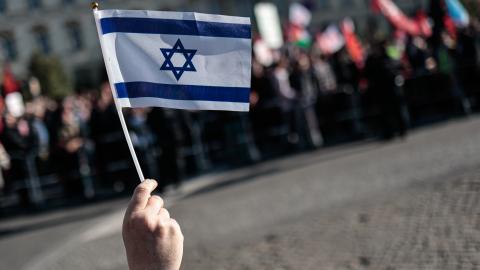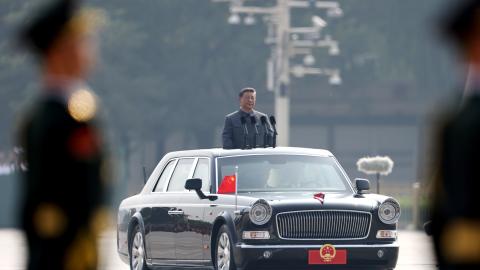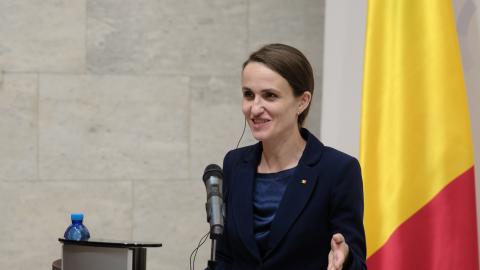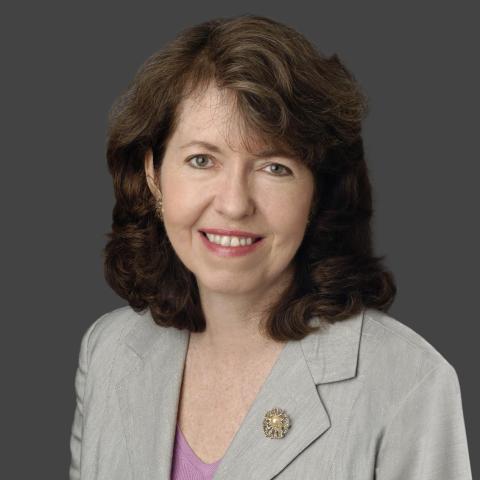In 1809, or so the legend goes, a dark-skinned young man in ragged clothing was observed loitering in front of the main entrance of Yale College in New Haven, Conn. When students stopped to ask him what was the matter, he is said to have replied, in halting English, that "nobody gives me learning."
Thus begins an early chapter in John Demos's absorbing "The Heathen School." No, the title is not a rude reference to unruly Yalies. It's the sobriquet of a short-lived academy that opened its doors in 1816 in the quiet Connecticut village of Cornwall. Its formal name was the Foreign Mission School, and its stated purpose was to educate "heathen youth" from far-flung parts of the world as well as from Native American tribes. Graduates were to be dispatched back home as teachers, doctors and missionaries. The school closed in 1826 after a scandal erupted over two Cherokee students who courted and married local women.
Mr. Demos, an emeritus professor at Yale, is the author of several notable volumes on early American history. His previous subjects have included the witches of Salem, Mass., and a Puritan family in colonial Massachusetts that was captured by the Mohawks during the French and Indian wars. His considerable narrative skills are again on display in "The Heathen School."
When possible, Mr. Demos lets his subjects speak for themselves, quoting liberally from primary sources, such as personal letters, newspaper articles and church documents. He integrates the quotations seamlessly into the text, with the result that the men and women in his stories come alive across the centuries. The lively tale is marred only by the author's occasional sarcastic interjections—usually at the expense of Christians who weren't exemplars of their faith.
Among the mission school's first students was the wistful young man at Yale who longed to be educated. His name was Henry Obookiah, and he was an "Owhyhean." That is to say, he was a Hawaiian, or in the parlance of the day, a native of the Sandwich Islands. He arrived in the United States after working his passage as a seaman on a New England trading ship that had sailed to China. In New Haven, he was taught informally by Yale students and invited to live at the home of the college president, Timothy Dwight. He went on to master English, become a devout Christian and write a memoir (with the help of a mentor at Yale) that became a best seller and catapulted him to celebrity status.
Obookiah is just one of the remarkable men and women in "The Heathen School." The book is peopled with a long cast of interesting characters—preachers, professors, philanthropists, missionaries, tribal chiefs. Presidents John Quincy Adams and Andrew Jackson make cameo appearances. Then there are the students themselves—a mix of boys and young men from the Pacific Islands, East Asia, Europe, Mexico and 14 Native American tribes.
The townspeople of Cornwall are especially well limned by Mr. Demos. At first, the residents take pride in the school and are generous to the students, with whom they develop affectionate relationships. But when two teenage girls fall in love with Cherokee students, a crisis ensues. The men and women of Cornwall are shocked into a close examination of their Christian beliefs and forced to take sides on the question of intermarriage. The author poignantly traces the evolution in the attitudes of the girls' families from initial revulsion to warm acceptance. The new wives accompany their husbands to their Cherokee homelands and by all accounts are happy in their marriages.
Mr. Demos follows the Cherokee suitors long after they leave Cornwall. Both men become influential leaders of the Cherokee nation. John Ridge negotiated with the federal government on behalf of his people. Elias Boudinot (who had taken the name of a New Jersey congressman and president of the American Bible Society) was editor of the first Native American newspaper.
Both men were key players in the process of Indian "removal." They initially opposed the forced relocation of the Cherokee nation from Georgia to the Indian Territory in what is now Oklahoma, but they came to support it, in part because they feared that Cherokees would not survive white encroachment if they stayed in Georgia. "Their central point," Mr. Demos writes, "was the danger of 'degradation' and 'pollution' of Cherokee lifeways from the malign influence of whites," who had introduced whiskey to the community and "contaminated" (Ridge's word) Cherokee women. As Mr. Demos asks, posing the question that had split the people of Cornwall: Just who were the "savages" here and who were the "civilized" people?
Mr. Demos uses the story of the heathen school and its scholars as a vehicle to examine larger subjects in U.S. history—the China trade that helped open the young nation to the wider world; the Second Great Awakening, which propelled a Protestant religious revival; and, most movingly, the Trail of Tears, the forcible relocation of the Cherokees and other tribes after the Indian Removal Act of 1830.
He also examines broad themes in the evolution of U.S. identity. In his words, the heathen school's "bedrock ambition was to make the world a better place," an aim he rightly calls "intrinsic to American culture and history." The school was, however, a failed "experiment": The collision of cultures rocked the town of Cornwall, divided families and led to the school's collapse. Yet it was a noble venture that pointed "toward the diverse, multicultural people we have become today."




















